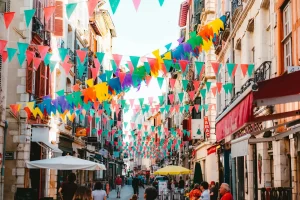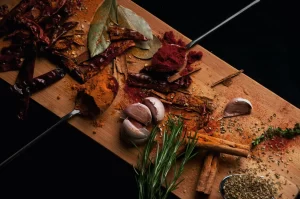Understanding the Difference Between Portuguese and Brazilian Culture
Portugal and Brazil, connected by a common language and history, have evolved unique cultural identities. This article delves into the nuanced distinctions that have emerged over generations, exploring language, cuisine, social customs, family dynamics, religion, and the arts.
Introduction:
Portugal and Brazil share a linguistic and historical bond, rooted in their common language, Portuguese. However, despite these shared roots, cultural differences have flourished, shaped by geography, history, and a blend of diverse influences.
Language:
Similarities and Differences:
The core language remains Portuguese, but nuances in pronunciation, vocabulary, and grammar distinguish Brazilian Portuguese from its European counterpart. These differences contribute to the cultural tapestry, reflecting regional influences.
Formal vs. Informal:
Cultural distinctions surface in the use of formal and informal speech. The contrast between “tu” and “você” serves as an example, highlighting how cultural nuances extend beyond mere linguistic variances.
Cuisine:
Portuguese Cuisine:
Portuguese cuisine boasts key ingredients, dishes, and cooking techniques reflecting Mediterranean and African influences. The flavors are rich, diverse, and rooted in tradition, contributing to Portugal’s culinary identity.
Brazilian Cuisine:
Brazilian cuisine is a mosaic of regional flavors influenced by indigenous, African, and European cultures. The diversity in ingredients and preparation methods mirrors the vastness of Brazil’s landscapes and cultural influences.
Social Customs and Etiquette:
Greetings and Body Language:
The manner in which people greet each other and their use of personal space reveal cultural differences. Understanding nonverbal communication nuances enhances cross-cultural interactions.
Time Perception and Punctuality:
Attitudes toward time vary, with Brazil’s concept of “jeitinho” reflecting a more flexible approach. Exploring these differences aids in navigating social and professional interactions.
Family and Relationships:
Family Structure and Values:
Distinct family structures and dynamics exist in Portugal and Brazil. Understanding the importance of extended relatives and familial bonds is crucial in comprehending societal norms.
Gender Roles and Expectations:
The roles of men and women in society are evolving differently in Portugal and Brazil. Examining societal expectations provides insights into cultural norms.
Religion and Beliefs:
Predominant Religions:
Portugal and Brazil exhibit different religious landscapes. Understanding the dominant religions and their influence on daily life enhances cultural awareness.
Superstitions and Folk Beliefs:
Unique superstitions and folk beliefs add layers to each culture’s identity. Exploring these beliefs offers a glimpse into the cultural fabric of Portugal and Brazil.
Art and Music:
Traditional Music and Dance:
Distinct styles of music and dance showcase the cultural richness of Portugal and Brazil. Exploring renowned artists and genres reveals the diversity within each nation’s artistic expressions.
Visual Arts and Architecture:
Differences in artistic styles and architectural influences highlight the cultural evolution in each country. Notable artists and architectural styles contribute to the visual tapestry of Portugal and Brazil.
Conclusion:
In conclusion, the cultural differences between Portugal and Brazil are multifaceted, spanning language, cuisine, social customs, family dynamics, religion, and the arts. Despite these distinctions, a shared heritage and mutual respect underpin the relationship between these two vibrant cultures.
Key Takeaways:
- Language:
- Portuguese exhibits nuances in pronunciation and vocabulary, while Brazilian Portuguese reflects distinct regional influences, contributing to diverse cultural identities.
- Cuisine:
- Portuguese cuisine is influenced by Mediterranean and African flavors, whereas Brazilian cuisine embraces diverse regional influences, creating a fusion of culinary cultures.
- Social Customs:
- Portugal emphasizes formality and personal space, while Brazil showcases varied greetings and a flexible time perception, revealing cultural intricacies in social interactions.
- Family and Relationships:
- Portugal places a strong emphasis on extended family bonds, whereas Brazil experiences evolving family structures and changing gender roles, reflecting societal shifts.
- Religion and Beliefs:
- Portugal is predominantly Catholic, influencing daily life and traditions, while Brazil’s diverse religious landscape contributes to unique cultural expressions and syncretism.
- Art and Music:
- Portugal boasts Fado and traditional art, whereas Brazil is renowned for Samba, Bossa Nova, and vibrant visual arts, showcasing the diversity within each nation’s artistic expressions.
FAQs:
Q: How does language impact cultural differences between Portugal and Brazil?
A: Language nuances, including pronunciation and vocabulary variations, contribute to distinct cultural identities, reflecting regional influences in both countries.
Q: What role does religion play in shaping cultural differences?
A: Religion influences daily life and traditions, with Portugal predominantly Catholic and Brazil exhibiting a diverse religious landscape, contributing to distinct cultural expressions.
Q: How do family structures differ between Portugal and Brazil?
A: While both cultures emphasize family, Portugal leans towards extended family bonds, while Brazil experiences evolving family structures and gender roles.



